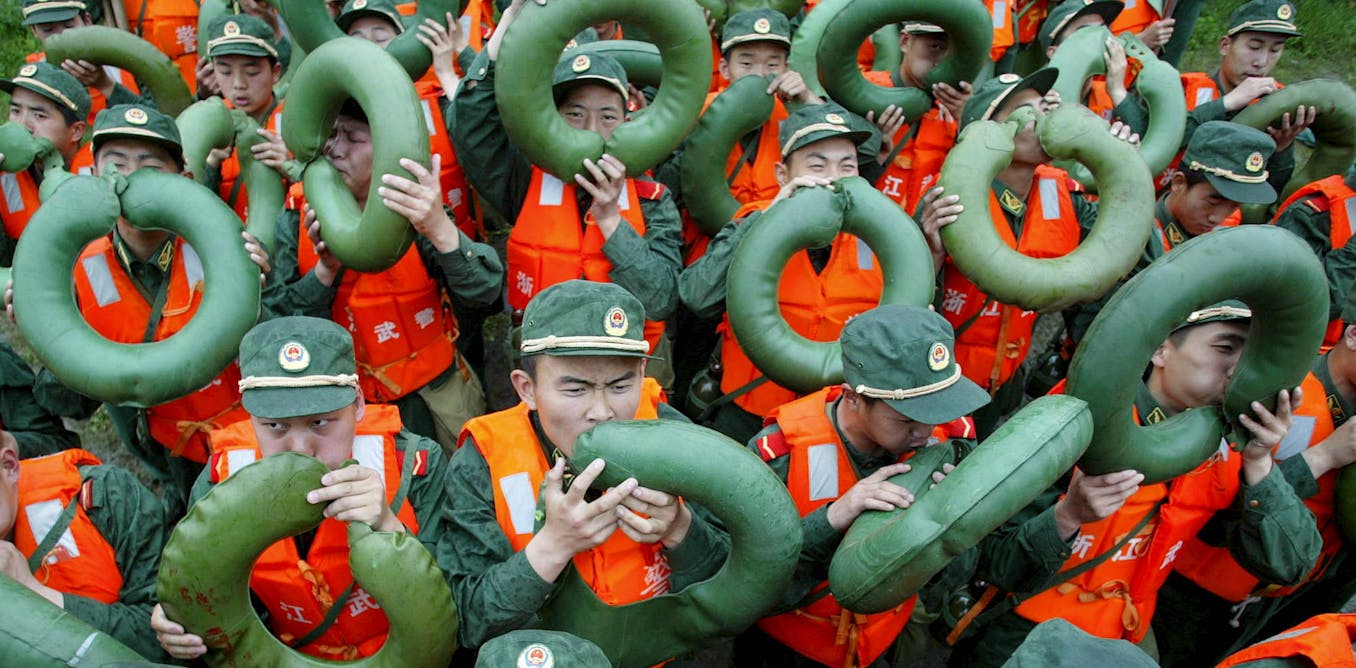Toeing the u-shaped line in the south china sea
- Select a language for the TTS:
- UK English Female
- UK English Male
- US English Female
- US English Male
- Australian Female
- Australian Male
- Language selected: (auto detect) - EN

Play all audios:

The lines traversing the surface of the globe are legal fictions that determine the fates of nations. Nowhere is this truer than in the South China Sea. China’s infamous U-shaped line claims
most of this semi enclosed sea on shaky historical evidence and without legal basis. The line first appeared on Chinese maps in 1947, and encompasses the allegedly resource-rich Spratly and
Paracel Islands. This territorial claim is to the detriment of seven other littoral nations - Brunei, Indonesia, Malaysia, the Philippines, Singapore, Taiwan, and Vietnam. Access to the Sea
and its resources is becoming a key source of tension between China and that other emerging Asian economic and military power – India. Little wonder then that commentators designate the Sea
as a potential flash-point. MURKY LEGAL WATERS The United Nations Convention on the Law of the Sea (UNCLOS) – sometimes referred to as the “constitution of the seas” – governs maritime
boundaries. UNCLOS establishes which waters a territorial state may claim absolute sovereignty over. The Exclusive Economic Zone (EEZ) also effectively extends state jurisdiction, albeit on
less certain legal basis. Importantly, the EEZ does not deprive foreign states of rights such as freedom of navigation and access to the wide commons of the high seas. China has been keen to
exploit the undoubted ambiguities of the UNCLOS, by seeking to convert EEZ territorial jurisdiction into absolute sovereignty. This would be to deny the rights of passage, along with the
freedoms of navigation and aviation, in those areas. China’s 1947 U-shaped line claims the majority of the South China Sea as its historical waters. This line effectively annexes other
nation’s EEZs and claims the air space and sea lanes of the high seas. When a US intelligence aircraft collided with a Chinese fighter aircraft in 2001, China viewed the incident as a
transgression of its sovereign territory according to its interpretation of international law. In 2009 the unarmed civilian scientific surveillance ship USNS Impeccable was harassed by five
naval vessels. China announced that it would adopt a “suffer the consequences” stance against any perceived intrusion into its waters by foreign navies. The US maintains that it has a role
as the guarantor of regional stability and navigational freedoms on the high seas. The US’s official policy of “active neutrality” maintains a refusal to enter territorial disputes, but
opposes the use of force in settling them. This guarantee of regional stability was affirmed by Secretary of State Clinton at the ASEAN Regional Forum in July 2010. Clinton’s remarks were
quickly condemned by China as an attack on its sovereignty and as interference in a regional dispute. COMPETITION FOR RESOURCES In 2010, China announced in a Defence White Paper its
intention to create an uncommanded sea through a strategy of denial. Just a month later China planted its flag at a depth of nearly four kilometres on the floor of the South China Sea.
China’s intentions have been blatantly communicated since this technically impressive and symbolic gesture. China has issued stern warnings to India following its agreement to develop oil
and gas fields off the the coast of Vietnam. China considers these waters to fall under its jurisdiction. This stand-off is largely determined by resources. With China securing Myanmar’s
vast oil and gas reserves and securing supplies from Bangladesh, India is seeking new alternatives. India’s “southern forwarding strategy” seeks to develop bilateral relations with littoral
states in a bid to extend its influence in the South China Sea. The need to secure energy sources and supplies may threaten the web of multilateral and bilateral agreements. Most notably the
2000 China-Japan Fisheries Agreement, the 2002 Conduct of the Parties, and the 2005 Tripartite Agreement between Beijing, Hanoi and Manila which tentatively served the work of constructive
resolution in the region. SECURING TRADE AND STABILITY Oil and gas, however, have never brought the littoral states to the table. Unless some mechanism is found to lift suspicion and
construct a regime among adversaries, the strategic and economic interests of other nations are likely to be drawn into the regional chaos. Australia’s interests are vitally connected to the
South China Sea. Access to the Sea’s communication lanes are essential to its $200 billion worth of seaborne trade with its most important Asian trading partners. Securing the freedom of
navigation in these waters through regional stablity is of the highest priority to current and future terms of trade.